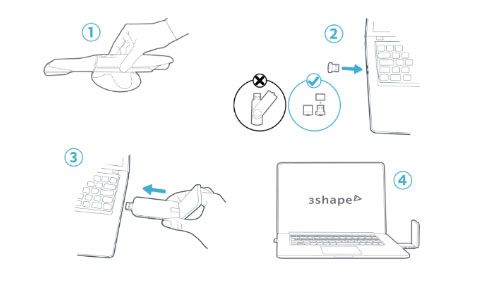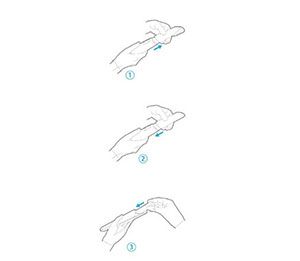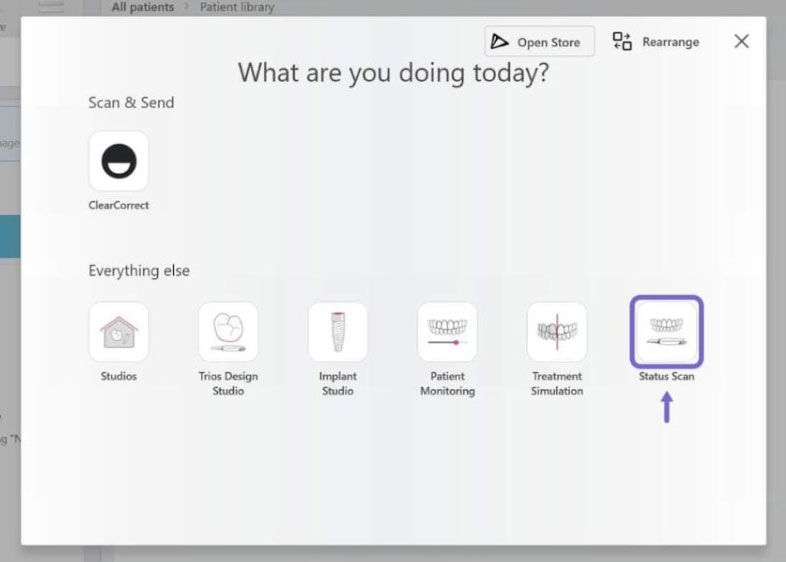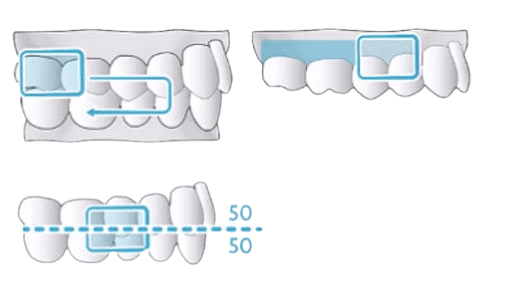If you are new to intraoral scanning, there are some things to learn. The problem is: you don’t know what it is you don’t know.
In this blog post, we will guide you through the 13 things you and the team need to learn.
Learning is our backyard. Not only have we pioneered the field of intraoral scanning since its inception, but since we are training practitioners every day when they get onboarded to TRIOS by us, we know first-hand where the typical knowledge gaps are.
So if you aren’t already enrolled in the onboarding program (included in TRIOS Care), then read on to make sure you begin or continue your learning journey in a structured and efficient way.
But first:
What happens if you don’t learn this?
If you have invested in a 3Shape TRIOS intraoral scanner, then at least one person in your practice knows the awesome benefits it can unlock. But if you don’t fully know how to use it, you will never fully realize those benefits—that is obvious.
But ultimately, a key reason for learning within all the below areas is the feeling you get when using the technology. It is about confidence and that sense of mastery that is a key ingredient in loving your work. And in the end, this will also lead to better patient care.
One point, though:
Understand everyone´s role and interest in scanning
Often, the doctor is the driving force. But for example assistants, hygienists and even the receptionists are (or at least could be) deeply invested in this new way of providing treatments and patient care.
All these critical roles approach this subject in different ways, as it relates to their responsibilities and tasks in the practice. Do they communicate with the patient? Prepare the clinic setup? Prepare the scanner? Communicate with the labs?
It probably doesn’t make sense that a single team member knows every aspect of intraoral scanning, so you need to find out who should know what in your practice. Because when each team member knows and has fully embraced their part of intraoral scanning technology, they will find that level of confidence and comfort mentioned a moment ago.
And on that note: let’s dive into the areas you need to learn about.
The fundamentals of the hardware

When looking at how to work with the hardware in the best way, I would recommend starting with the current setup of your practice.
Since you have many options when setting up and optimizing your intraoral scanning hardware, how you want it comes down to personal preferences.
How many chairs do you have? How many rooms? Is everything easily accessible?
1. A basic or a client-server setup
The setups are as many as there are practices. For example, some prefer the basic setup of a laptop and a scanner, and some want a server room—perhaps in the basement—and multiple satellite screens around the rooms, displaying their practice management system.
Today’s advanced, wireless, technology can accommodate a highly mobile setup. To make the right choices from the start or along the way, you need to learn what is possible and what it takes.
2. Other network and connectivity-related issues
Some practices have dedicated IT staff (or perhaps an IT-talented nephew or niece), and some don’t.
Regardless, somebody needs to learn about the basics of the TRIOS network requirements for setting up your hardware system, or you will miss opportunities and the freedom to have the hardware set up just right for your practice.
3. Installing the scanner and activating wireless functions
Installing your hardware and activating all the functions it comes with, can be done with the help of our online setup guides. If you have a wireless scanner, you have the option to activate TRIOS Share and with that, move your scanner from room to room.
You will then only need one wireless TRIOS intraoral scanner to use on every PC in your practice. It requires you to learn to work with the software that is required for mirroring your scan PC to other PCs (Splashtop).
4. Hygiene and maintenance
Like with any device for daily use, you want to ensure your scanner stays in top condition.
There are a few things to keep in mind: cleaning and maintenance of your tips, calibration (not needed for TRIOS 5, though), and working with batteries.
Doing this according to our training material will ensure safety, long-time usage and continuous good scanning quality.

Of course, as a 3Shape customer, you always have the option of contacting 3Shape Support, with a dedicated team ready to answer any queries you may have.
The fundamentals of scanning
Scanners become ever more intelligent and easier to operate. But you will need to develop a basic understanding of how to capture and work with a scan.
5. Scan strategy
Typically, in intraoral scanning, you follow a scan strategy where advanced software technology helps you determine what to do next. But by fully grasping the fundamentals behind it, you will have more freedom and flexibility. You will not feel as compelled—or “locked in”—to follow the pre-determined, standardized ways of working.
You will be able to use more of your own judgment and expertise and unlock the secret to a perfect TRIOS scan.
6. Choosing a treatment workflow

Aim to learn how to determine what you want to achieve, and how to create and follow an order form (the software will take you through a protocol based on an order form). In most cases, you will want to do a scan & send workflow, and send your case to the lab right after.
Ultimately, the better your grasp of the fundamentals, the better you will be at capturing a true, accurate representation of your patient’s oral cavity, and providing the highest-quality treatment.
7. Scanning for your indication
Every patient is different. This is why it is vital you adjust your scan strategy to the indication you are working on. Scanning for crowns or bridges is different from scanning for orthodontic or implant cases. To add to that, you can also opt for designing and producing in-house with our dental CAD software.
8. Scanning the bite
Scanning the bite requires you to keep a few things in mind that come on top of using the right scan strategy: it’s about using the bite scan possibility in your TRIOS in the most optimal way, but also about patient positioning, patient preparation, and covering the right amount of teeth.
Our team of dental trainers has put together a series of Trending Topics videos on bite scanning. It takes you through the TRIOS bite scanning functionality, scan quality and adjusting for contacts so you will never need to be in doubt about bite scanning anymore.
The fundamentals of your TRIOS software
Besides the obvious need to learn how to use any piece of software to get the most value from it, with today’s intraoral scanning technology, you can do anything you can with traditional impression-taking (and a whole lot more).
But not all dental practitioners are as eager to let digital technology and software suddenly play a much larger role in their work. There could be different reasons for this, such as:
- They could be used to the more traditional methods. When you have “mastered” such a complex subject, you want to continue using your skills.
- People, and generations, are just different. Are you a person who adopts new technology early on, or do you generally resist?
Your team probably has people from different parts of that “spectrum”. That’s normal, and healthy. But one thing is for sure:
To overcome that “fear”, or this natural “hesitance”, you need the whole team to fully understand just what is possible with the software that powers your TRIOS (which is called 3Shape Unite, by the way). By learning it as you would any new thing, you will motivate yourself and those around you.
By not learning your intraoral scanning software, since times are changing, you risk being left behind. Eventually, all practitioners need to get on board the train, so why not learn these things today and not risk being left behind?
9. Adding a patient
Before you can even start scanning the patient or designing the restoration, you need to add a patient and create an order in 3Shape Unite according to the principles outlined in our patient management training module.
10. Which additional software is relevant for your practice
The word ‘add-on’ software might sound like there are additional actions required. Fortunately, that isn’t the case. What you need to learn, is how to work with the Unite Store to install additional dental apps from the store.
With these apps, you can start using the included treatment visualization apps such as Smile Design or Treatment Simulator, the Studio Apps for in-house design and production, or connect with collaboration partners such as clear aligner, sleep treatment or implant companies.
11. The dental design and treatment process in the software
When we develop our digital dental technology at 3Shape, we speak with practitioners across the world, mapping out in detail their individual workflows. With all this information, we create workflows that mix the freedom to create your own optimal workflows, with more structured ones where the software guides you through each step as it happens.
For both these types of workflows in our workflow engine, it will boost your practice if you learn, in detail, what each step means. But rest assured: our software is designed with a ‘next-next’ logic, taking you through the workflow intuitively. Besides, most of it you already know purely by being an experienced dental practitioner.
Our team of dental trainers has created dental software training material for all workflows: from dental designing to treatment planning to digital smile design.
The fundamentals of collaborating with partners
Suddenly, with digital technology, the world is completely open. You can collaborate with anyone, on anything, anywhere. Failing to realize these kinds of opportunities, you will lose competitiveness. You will move slower and work more inefficiently.
And, with intraoral scanning, not only do you work safer by not handling physical objects: you work in real-time. You get immediate results, can track progress, and get instant confirmation from your partners, for example, if your scan is of good-enough quality. So, what is it you need to learn in this area?
12. Communication: the clinic-to-dental-lab workflow
You can send your data and work with a lab anywhere in the world. 24/7, 365 days per year. And you can work on your cases from home or anywhere else. And even if you don’t want to operate globally, you can collaborate with several local labs simultaneously.
Your workflow engine is the place where you will send the case, including the scans and the created order, to your lab of choice. For this, you need to be able to work with the order form. You can also send the scans to your patients, if they are interested in this.
13. Communication with other treatment partners
If you are working on clear aligner cases, or implant cases, you might want to collaborate with external partners for those. In a conventional workflow, this requires sending files back and forth, either by snail mail, via an ftp server or via TRIOS inbox.
Moving this collaboration workflow to the TRIOS workflow engine requires you to learn to work with the apps in the Unite Store.
Where to learn all this
Digital dentistry is a vast area. You have so many treatment options. And at any stage, you have to make choices. This is where your training and skills come into play. That’s the foundation—the technology is an enhancer.
But all these treatment choices and how they intersect with the digital technology, means you need a broad range of learning materials, covering “any” scenario. It is up to you and your colleagues to find what specifically is relevant to your practice and roles.
As in any field, the internet is overflowing with educational “content”, but as a medical professional, you appreciate the importance of source criticism. When the stakes are as high as in your field, you need to know who to listen to.
That is why we at 3Shape invest heavily in education. Our learning materials are used daily by thousands of dental professionals across the world.
The following are our best places for you and your team to learn
Inspiration
Case studies, webinars, articles.
Under resources, you can find many more blog articles, studies, ebooks and webinars.
TRIOS training
Online TRIOS training modules.
From product and treatment training to a forum.
Classroom courses
3Shape Academy digital dentistry courses.
Learn to use our dentistry solutions effectively.
Personal onboarding
We take care of your first 100 days.
Our onboarding program comes for free with TRIOS Care.
And, of course, many prefer to simply “try it themselves”. As with anything in life, trial and error is the great educator. There are plenty of safe ways to experiment with your scanner and software.
In summary: it’s all about getting started
Regardless of where you are on your journey with a 3Shape TRIOS intraoral scanner, there are many aspects to learn, such as the fundamentals of intraoral scanning, hardware, software, collaboration and workflows.
No two dental practices are the same, so your learning needs to be specific to you. And of course, your whole team needs to be on board and gain the knowledge specific to their roles.
Thankfully, there are vast learning resources out there. But now that you know which areas to study, you can approach your learning journey in a structured and efficient way.
And, on top of that: when purchasing 3Shape TRIOS, you get onboarded by a customer success manager for free. After that, 3Shape Community is a vast resource of online dental learning.
Dive deeper into any of these areas, from scanner setup, maintenance, using the software to treatment planning in our training universe.
